|
SATELLITE VOICE OVER IP (VOIP) |
Broadband Satellite Internet VoIP Solution

|
|
VoIP
over Satellite Internet - Bringing Low Cost Telephony to
the users of Satellite Internet Service |
Communicate anywhere, anytime with Satellite VoIP |
Voice over Internet Protocol (VoIP) telephony is a technology taking
the world by storm. VoIP allows people to use their computer's
Internet connection as a telephone, resulting in huge savings on
both local and long distance calling. VoIP technology sends voice
transmissions over the Internet as a data packet, which is organized
and decoded by the VoIP software. Most people who receive a VoIP
call over their standard telephone line never even realize that they
are connected with a VoIP user. VoIP over satellite works just
like the telephone you have in your home today. You pick up the
phone, dial the number and it connects to whom you're calling
through your high-speed satellite internet connection.
Given the tremendous cost savings available for both business and
residential VoIP customers, it is no wonder that more and more
companies and individuals are switching to VoIP. A cooperation between VoIP providers and satellite Internet service
providers is adding yet new dimension to VoIP. With satellite
VoIP, you are allowed to use the Internet as a telephone no matter
where you are.
Satellite VoIP is perhaps the last frontier in VoIP development.
Satellite Internet is becoming more and more popular among customers living in remote areas where telephone or cable
service has not yet been available. Although satellite Internet
service may be more costly, it does allow people in remote areas to
enjoy all the benefits of high speed Internet, no matter where they
live. VoIP telephony has now been added to that list of benefits.
Additionally, satellite VoIP will shrink the world for a number of
customers in places out of the way, as satellite hardware and
service becomes more and more affordable.
A number of VoIP providers have waded into the satellite VoIP
marketplace, including Net2Phone
and Vonage.
To save costs, these providers have teamed up with large satellite
companies Hughes
Electronics and SkyFrames
. The addition of satellite
VoIP allows them to maximize their hardware capacity.
The satellite VoIP will be a sure
investment for the future, but the technology still faces a number
of hurdles. Satellite communications involve trillions of Gigabytes
of data, and organizing these data streams has always been a
challenge. Managing this data for Internet service has already been
accomplished, but satellite VoIP requires much more precision to
prevent delays in transmission (known as "satellite latency") that
may disrupt VoIP signals. The
satellite VoIP provider partnerships are quickly sorting out the
technology necessary for clear satellite VoIP service.
The development of effective satellite VoIP service will make
satellite Internet service even more competitive with cable and DSL
Internet providers. It may also allow developing countries to enter
the Information Age much more quickly, bypassing the lengthy stages
of developing a massive standard telephone infrastructure network.
With developments in Internet and IP networking, the ability to transmit voice calls which have been traditionally handled by the public switched telephone network (PSTN) over a lower cost IP infrastructure has become a reality. More and more users are researching VoIP capability when purchasing a connection to the Internet or simply expanding their private intranet. VoIP based telephony has also provided a very cost-effective solution for companies that have locations in many disparate regions and require connectivity back to their headquarters.
What are important elements, that require consideration, when engineering a satellite network capable of effectively handling VoIP? There are several of them:
Latency
There is approximately 280 msec of one-way propagation delay due to the location of the Geo Stationary orbit and the speed of light. Regardless of the satellite product, this propagation delay must be considered and overcome. Today, numerous overseas calls originated in the United States are actually transmitted as VoIP over satellite calls, particularly if provided by the smaller long distance carriers.
Jitter
Quantifies the effects of network delays on packets arriving at the receiver. Packets transmitted at equal intervals from the transmitting gateway arrive at the receiving gateway at irregular intervals. Excessive jitter has the effect of making speech choppy and difficult to understand. Jitter is calculated based on the inter-arrival time of successive packets. For high-quality voice, the average inter-arrival time at the receiver should be nearly equal to the inter-packet gaps at the transmitter and the standard deviation should be low. Jitter buffers (packet buffers that hold incoming packets for a specified amount of time) are used to counteract the effects of network fluctuations and create a smooth packet flow at the receiving end.
Packet Loss
Packet loss or packet corruption will cause degradation of voice quality. Since all of the voice traffic is UDP/IP and would not be retransmitted (like in the case of TCP/IP) all packets would be completely lost if the packet becomes lost or corrupted. It is extremely important to have very low Bit Error Rates (BER) to ensure low or no corruption or loss.
QoS and Traffic Prioritization
Packet switched networks are subject to congestion as typical data traffic is bursty. Congested networks can wreak havoc on a VoIP call with delayed , dropped , or packets that are out of sequence. It is a necessity to have QoS and Prioritization in order to guarantee delivery of VoIP traffic through congested links.
Compression Technologies
There are many encoding schemes that have been standardized for voice. The most dominant standard in the industry is the G.729 codec. G.729 encoding requires 8Kbps of bandwidth, but because of the overhead associated with IP/UDP/RTP headers, the actual bandwidth needed is between 16 and 18Kbps (depending on the equipment vendor and configuration). With Compress RTP (cRTP) the total bandwidth requirement per call will drop to about 10Kbps. There are other standards, such as G.723 that takes only 5.3Kbps for the voice payload.
Required bandwidth per VoIP call
To design a network properly, one would need to know the amount of bandwidth required per VoIP call, the number of concurrent calls, and the duration of the call. Bandwidth required per VoIP call will depend the encoding standard used, header compression, and payload size. For example, with G.729(b), payload of 40 bytes, and no header compression, a VoIP call would take about 16Kbps of bandwidth. With header compression this would require 10Kbps of bandwidth.
| Satellite VoIP Adapter |
A pair of Internet phone providers recently signed deals to help satellite companies add Net-phoning service to their arsenal of offerings.
Hughes Electronics and voice over Internet Protocol (VoIP) provider Net2Phone announced an agreement this week to combine Hughes' satellite-delivered broadband service with Net2Phone's inexpensive dialing plans, which rely on the Internet rather than a phone company's privately owned network. The two companies are first targeting broadband- and phone-starved areas in Africa.
On Tuesday, New Jersey-based VoIP provider Vonage said it has a similar-sounding project in the works with satellite broadband service provider SkyFrames. The companies plan to make their combined services available to troops in Iraq during the upcoming holidays and, according to Vonage Executive Vice President Louis Holder, "could conceivably push this service out" to a wider audience, depending on its success.
Some believe that satellite companies and VoIP providers are a pairing made in heaven. The coupling enables the satellite providers to keep pace with rival cable companies, which are using VoIP to sell a "triple play" of broadband, television and telephone service. VoIP providers, for their part, get a chance to find new customers, and--in the case of Net2Phone--be the first telephone services in areas where traditional phone lines haven't yet reached, said Net2Phone Global Service President Bryan Wiener.
But the marriage of these two technologies is not without problems. Because VoIP calls use the Internet instead of traditional phone lines, the packets of digital information can get lost among trillions of other Net communications. The initial service with SkyFrames is "a little better than cellular, but a little worse than what we're used to," Holder said.
Net2Phone's Wiener said, however, that his company and Hughes have developed a way to prioritize voice calls, as they travel over networks. That helps ensure the high level of voice quality traditional phone dialers now expect, he said.
A SkyFrames representative didn't respond to a call seeking comment
 In more technical terms, the VOIP system uses the phone adapter that we send to you for free to convert your voice from an analog
signal to a digital signal. The digital signal then can be sent
over your high speed Internet connection because it is recognized
as data and then is sent over the Internet.
In more technical terms, the VOIP system uses the phone adapter that we send to you for free to convert your voice from an analog
signal to a digital signal. The digital signal then can be sent
over your high speed Internet connection because it is recognized
as data and then is sent over the Internet.
When someone calls you, they dial your number. Behind the scenes,
your number looks very much like an e-mail address. This number
instructs the call to travel over the Internet and through our
network to the phone adapter we sent you, your phone rings, and
all you have to do is pick up and answer it. All you need is a
high-speed Internet connection such as satellite internet. A
high-speed Satellite Internet connection is the connection to your
home that provides fast access to the Internet.
You pick up the phone, hear the dial tone, and dial the telephone
number of your choice. There are no extra numbers to dial and no
special routines to follow. It's that simple. You don't have to be
a tech wizard to use our service, only someone who wants a great
price and great features from their phone company every day.
And if you'd like to surf the web and use your VOIP service at the
same time, the Phone Adaptor can share your Internet connection
with your computer. Talk on the phone and surf the net with ease.
(Depending on your home/business network setup, this may require
additional equipment.)
VoIP Virtual Phone Numbers |
Virtual Phone Numbers
are very inexpensive secondary numbers that ring to your primary
VOIP line. The advantage is that people outside your local calling
area can call you for the price of a local call if you choose a
virtual phone number in their area code. Virtual numbers make it
easier for people to keep in touch with you because they can call
you for the price of a local call.
They work a lot like email address aliases. In the same way that
you can have more than one email address point to the same email
account, you can have more than one VOIP number link to your VOIP
primary number. Behind the scenes, the VOIP Call Routing Network
points your Virtual Number calls to your primary line. This
transfer is just as fast and seamless as any other phone call.
DW6040 Voice Appliance provides telephone access via the DIRECWAY
network
VOIP over Satellite introduction
Our 2-way satellite system do cover areas of the world where stable communication is quite difficult to get. Up to now we only have been able to deliver internet conectivity. It is quite obvious that also telephony is of extremely high interest to our customers. Thatßs why all our office solutions do have 2 VOIP Ports right from delivery.
The qualtiy which can be achievable over a satellite link can be compared quite well with the one over Immarsat or other satellite phones systems. Sometimes also with intercontinental calls, if they are not routed by optical fiber cable but by Satellite.
the VOIP gateway:
Our VOIP adaptor has 2 standard Voice Ports, which can be directly connected to a PSTN system or a regular analog telephone. Of course you also can use your cordeless phone. The adaptor is connected by Ethernet to our Performance Enhancement Gateway (PEH-Gateway).
does other VOIP equipment work on the satellite ?
We have tested many solutions, but only few
of them really have convinced our engineers. We have successfully
tested our equipment working with our satellites.
If you try to use different VOIP equipment,
it is very likely that it does not work on the satellite link.
When you use any different type of VOIP
service behind our satellite links, they "may" work as
well, but very often you experience terrible jitters or broken
connections on the upstream. The technical background of this, is
that these VOIP providers are not capable of prioritazing the network
traffic within our satellite network with their solutions. They are
also not capable of keeping a small part of the available bandwidth
reserved on the satellite link.
That is why it is very unlikely that another
solution will work on a shared satellite link.
Are you sick of paying exorbitant amounts to call Wisconsin, Macedonia, or Middle East?
The new service is designed to
provide long distance IP voice services to remote and underserved
areas of the world, enabling end users to place calls anywhere in
the world at competitive prices. The end users are expected to be
enterprises, and providers of voice and data services to the public,
such as Internet cafes and kiosks.
Net2Phone's VoIP telephony interface has been folded into HNS' DW
6040 voice appliance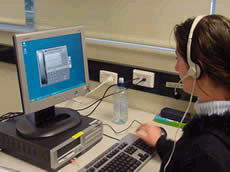 terminal. The device enables subscribers of
HNS' Direcway service to access Net2Phone's international
long-distance service.
terminal. The device enables subscribers of
HNS' Direcway service to access Net2Phone's international
long-distance service.
Previous satellite telephony systems delivered spotty performance
because systems couldn't differentiate between voice and data
packets. But this offering identifies voice packets and sends them
over the networks first. It will be sold as an add-on and is
expected to be popular in remote areas in North America, Eastern
Europe, Latin America, Middle East, Africa and other markets where
land-based telecommunications and Internet infrastructure is
under-developed.
The product will costs approximately $400 US for a four-port router.
HNS collaboration with Net2Phone extends the reach of affordable
VoIP international calling worldwide, wherever there is satellite
coverage. Net2Phone's core competency has always been to layer voice
over data networks. Satellite, especially in conjunction with new
DIRECWAY voice appliance, is the next frontier in data networks that can be powered
with voice.
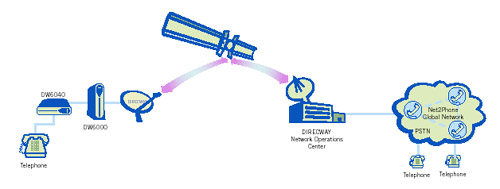
Make voice calls while you surf
With DIRECWAY VoIP,
you can surf, send and receive emails, download files and make a
voice call, all at the same time.
Every time you make or receive a call, software converts your speech
into digital information that is sent via the Internet. This is
known as Internet telephony or VoIP (Voice over Internet Protocol).
When that information nears its destination, it is converted back to
speech—so it is just like a normal phone call! As the bandwidth
you are using can deliver both Internet and voice traffic,
sophisticated networking tools ensure that all your voice calls are
given prioritised bandwidth access over other Internet traffic.
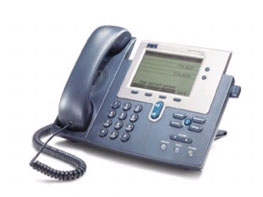
Cisco IP Phone
iDirect - Voice over IP (VoIP) over Satellite Solution |
iDirect technology provides an industry-leading solution allowing enterprises to design networks that simultaneously support data, voice, and video traffic. iDirect delivers unparalleled features and functionality which guarantees VoIP quality even through congested networks.
iDirect’s solution is capable of delivering BER better than 10-9 which is considered clear channel transmission and is therefore ideally suited for VoIP applications. iDirect provides its customers with a scalable private network solution where the QoS can be predefined and established. QoS can be assigned by traffic type, origination and destination, and can also be assigned a percentage of the bandwidth. In addition, available CIR (Committed Information Rate) capability allows the customer to plan the needed bandwidth in advance to make sure that all of the VoIP calls are of the highest quality.
iDirect’s platform supports H.323 or SIP compliant VoIP solutions thus allowing our customers the freedom to choose from multiple equipment vendors.
http://idirect.qorvis.com/galleries/default-file/Voice_over_IP_VOIP_over_Satellite.pdfVoIP technology continues to gain momentum and increasingly carries more traffic. as it proves to be a cost-effective method to implement and manage enterprise based voice solutions.. With new satellite technology the benefits of VoIP are further exacerbated by the tremendous flexibility, availability and reach inherent in a satellite transmission solution.
As with any solution, there are many issues to consider before deploying a VoIP solution. These include latency, reliability, traffic prioritization, QoS, and compatibility. The most of new Satellite Internet systems address all of these issues with a cost-effective, technically superior solution.
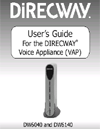 |
thumbnail to download DW6040 System User's Guide (PDF, 1,059K) |
 |
thumbnail to download DIRECWAY VoIP document (PDF, 1,820K) |
|
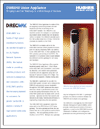 |
thumbnail to download DW6040 System Configuration Data Sheet (PDF, 58K) |
Click
here if you need to download free Acrobat Reader® software |
